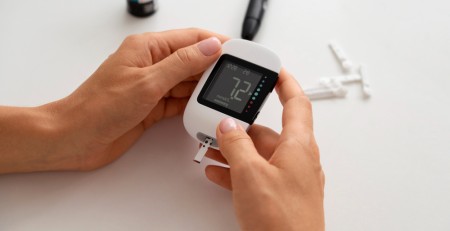Do I Have a Urinary Tract Infection or Something Else?
If you have pain or discomfort when you urinate, it’s possible that you have a urinary tract infection. But what you may not realize is that other conditions can cause similar symptoms. And since these conditions have different treatments, it’s important to know what the actual underlying problem is.
Here we discuss what a urinary tract infection is, how it’s treated, and other conditions that can cause similar symptoms.
What is a urinary tract infection?
A urinary tract infection — often called a UTI — is an infection of any part of your urinary system. This includes your:
- Kidneys (two organs that filter your blood to remove waste and make urine)
- Ureters (the tubes that carry urine between yours kidneys and bladder)
- Bladder (the organ that stores urine)
- Urethra (the tube that carries the urine from the bladder to the outside)
UTIs can be classified as involving the upper tract (the kidneys or ureters) or the lower tract (the bladder or urethra). Since infections usually come into the urethra from the outside, most infections involve the lower tract. UTIs can affect people of all ages, and they tend to be more common in women. In fact, some studies have shown that women are eight times more likely than men to develop a UTI.
The most common cause of a UTI is a bacteria called Escherichia coli (E. coli), which causes more than 80% of infections outside of the hospital. Other types of bacteria (like Staphylococcus or Enterococcus) and certain types of fungi and viruses can also cause UTIs.
What symptoms are associated with a UTI?
Urinary tract infections don’t always have symptoms, and the symptoms can depend on where the infection is.
Some common symptoms associated with a lower tract UTI include:
- Pain or burning during urination (also called dysuria)
- Frequent and urgent urination
- Pain in the pelvic area
- Waking at night to urinate (nocturia)
- Blood in the urine (hematuria)
When the upper tract is involved, symptoms can include:
- Pain in your back or side
- Fevers and chills
- Nausea or vomiting
What other conditions cause similar symptoms?
Although UTIs are very common, it’s important to know that other conditions can cause similar symptoms to a UTI.
Some of these more common conditions include:
- Sexually transmitted infections: Gonorrhea (N. gonnorrhoeae), chlamydia (C. trachomatis), and mycoplasma (M. genitalium) are common causes of sexually transmitted infections. They can cause painful urination and are sometimes associated with discharge from the urethra. These infections require specific antibiotics in order to be treated.
- Vaginitis: Vaginal infections can cause symptoms in the vagina and/or vulva, like burning, itching, or discharge. Although they don’t involve the urinary tract, these symptoms can sometimes feel similar to the burning or discomfort associated with a UTI. Common causes of vaginitis include bacteria (like Gardnerella or mycoplasma), yeast (candida), and trichomonas. Skin conditions, like contact dermatitis or lichen planus, can also cause vaginitis. Because the treatment for all of these is different, it’s important to know what is causing your symptoms.
Some less common conditions that can have similar symptoms to a UTI include:
- Overactive bladder: This can cause the feeling of having to urinate often or suddenly, and can also cause increased urination at night. The main cause of an overactive bladder is when the muscles of the bladder don’t work normally. This can happen as we age, or with certain conditions like diabetes.
- Pregnancy: Pregnancy can also be associated with lower urinary tract symptoms, such as increased urination at night, and problems with incontinence and incomplete urination. Pregnant women are also more likely to have UTIs than non-pregnant women.
- Prostatitis: In men, inflammation of the prostate (prostatitis) can cause pelvic pain, pain with urination, and an increased frequency of urination. In more severe cases, there can also be fever, chills, nausea, and vomiting.
- Kidney stones: Kidney stones (or nephrolithiasis) can affect men and women, and can be associated with chronic kidney disease. They occur when different minerals and salts form deposits that can affect any part of the urinary tract. Symptoms of kidney stones can include pain in the abdomen or side, nausea and vomiting, and blood in the urine.
- Diabetes: One of the main signs of diabetes is a frequent urination of a large amount of urine (polyuria). This is often associated with an abnormal increase in thirst. This is caused by an increase in sugar in the blood, and is important to diagnose and treat.
- Appendicitis: Inflammation of the appendix is a common surgical emergency. Symptoms include pain in the lower right section of the abdomen, nausea and vomiting, and fever. These symptoms can happen suddenly and are not usually associated with other urinary symptoms.
- Cancer: Although not as common, some types of cancer can have similar symptoms as a UTI. Bladder cancer can cause blood in the urine and may not have any other symptoms. Kidney cancer (renal cell carcinoma) can also be associated with blood in the urine and pain in the side.
Is there a test that can tell me if I have a UTI?
Diagnosing a UTI involves testing your urine (also called a urinalysis). This can be done in the doctor’s office or lab, and it looks for bacteria, white blood cells, and red blood cells in the urine.
This test is sometimes followed by a urine culture, which sees what bacteria are actually growing in the urinary tract and helps your healthcare provider select the best treatment.
If you have complicated or frequent UTIs, your healthcare provider may order additional tests. These include a study to see your urinary tract (like an ultrasound or CT scan) or a cystoscopy, which is a small tube to see inside the urethra and bladder.
How are UTIs treated and prevented?
UTIs are usually treated with antibiotics. The specific antibiotic used and how long treatment lasts depend on the type of bacteria causing the infection and if there are any other health complications.
Some common antibiotics used to treat UTIs include:
- Amoxicillin (Amoxil)
- Cephalexin (Keflex)
- Trimethoprim-sulfamethoxazole (Bactrim)
There are also some steps you can take that may help prevent UTIs. These include:
- Practicing good hygiene, including wiping from front to back for women, which helps prevent the spread of bacteria from stool.
- Drinking plenty of water, which increases urination and can help flush out bacteria.
- Avoiding some types of birth control, like spermicide, which in some women may increase the risk of UTIs.
Some studies suggest that cranberry juice and probiotics can help prevent UTIs in women, but more research needs to be done to see how helpful they really are.
If you develop symptoms of a UTI, it’s important to let your healthcare provider know right away so that you get the right diagnosis and treatment.
Book an appointment for Free Video or Phone Consultation with our Pharmacist
Curtseyed of Maria Robinson, MD










